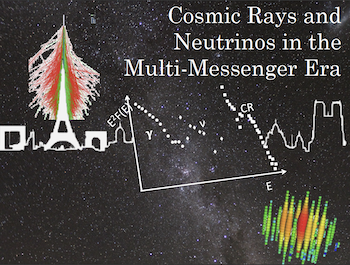Orateur
Description
In July 2019, the IceCube experiment, located in the South Pole, detected a 300 TeV neutrino from a direction consistent with PKS 1502+106, the fifteenth brightest known gamma-ray blazar detected by Fermi-LAT. Given the large redshift of 1.84, this source must have an extremely high intrinsic luminosity, and it has shown high variability in gamma-rays as well as in other bands during more than a decade of observations. While the source was not undergoing exceptional activity in gamma rays at the time of the detection, it was showing peculiar features in different bands, like a hard X-ray spectrum and an enhanced radio flux. In this work we employ a self-consistent numerical radiation model to explain different activity states of PKS 1502+106, representing 11 years of Fermi-LAT observations. We find two hadronic models that can both describe the multi-wavelength emission: a leptohadronic model with a contribution from photo-hadronic processes and a proton synchrotron model. Both models predict a substantial neutrino flux that is correlated with the gamma-ray and soft X-ray fluxes and are compatible with the detection of a neutrino during the quiescent gamma-ray state similar to the one observed contemporaneous to the IceCube high-energy neutrino.
| Related session | Multi-messenger |
|---|

